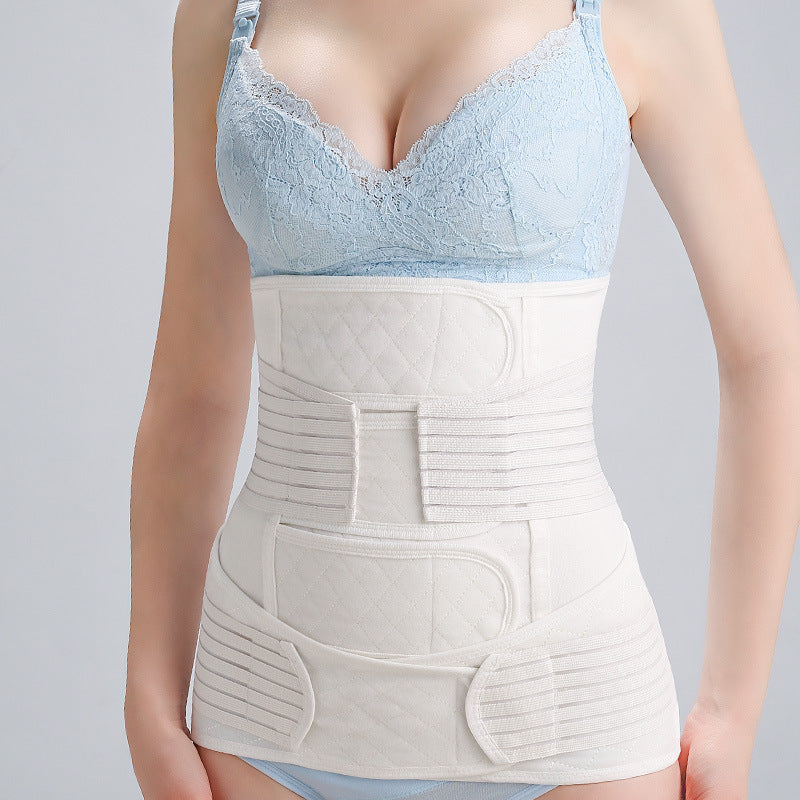
How long to wear post pregnancy belt?
Share
Do postpartum belly wrap really work?
More research still needs to be carried out to determine how effectively the postpartum belly wrap helps with the healing process after giving birth. For starters, for simply losing the extra baby weight gained during pregnancy, these bands may not work. However, they support abdominal abdominal muscles and in the case of recovery from a cesarean section, they protect the incision and its surrounding area. Basically, if you can picture wrapping a sprained ankle or a sore knee with a bandage to give the joint extra support in order to take the strain off the affected muscles, the postpartum belly wrap works in a similar manner to support the abdominal and upper pelvic areas.

Like any other device or accessory that claims to speed up healing, postpartum belly wraps come with their own set of pros and cons, which mostly depend on how you use them.
Advantages:
One benefit to wearing the postpartum belly wrap, as mentioned, involves supporting the muscles in your core. This added support helps with improving your posture, stabilizing the pelvic floor to prevent accidents, and if you're dealing with diastasis recti, a condition where your stomach muscles on each side split apart during pregnancy and labor. The wrap provides gentle compression of these muscles as they gradually move back to their original state.
Drawbacks:
As far as any disadvantages go, the postpartum belly wrap presents very few, most of which relate to the type or size you're using and if you're not wearing it properly. Some adverse effects include soreness around the edges of the band or around the core, pain on the incision site, prolapse of the pelvic floor, or skin irritation.
While these signs shouldn't be ignored, most of them can be resolved by loosening up the wrap. Wearing a postpartum belly wrap too tightly can prevent adequate circulation and ends up creating more discomfort instead of relief. Plus, muscles can be squeezed too tightly which slows the healing process rather than giving support to the area. Moreover, if you're experiencing a rash or itching in the area underneath the belt, then you might be having an allergic reaction to the material. Thus, you might need a different type of wrap.

What is the best time to start wearing a postpartum belt ?
During pregnancy, a woman’s uterus will become bigger and the abdomen will get loose. And, your stomach will protrude and abdominal muscles will get flabby if it’s a natural childbirth.
According to the doctors, women who are giving a natural birth should start wearing a postpartum belt during the first week of delivery for effective results. It's even better if you start using it on the 3rd day after your natural delivery. Normally, doctors ask us to wait for at least a day after childbirth before beginning to wear a postpartum belt . Therefore, we suggest you consult your doctor about the right or the best time to start wearing the belt because of the fact that he or she is the one who is well aware of your health condition.
However, you must note that you should not wear the postpartum belt all day long. You should untie it when lying or sitting. Wearing a postpartum belt all day long will affect your blood circulation, restrict the activities of your lumbar muscles and abdominal back, and even slow down the recovery process.
If you need to go back to strenuous activities or to work early, you can wear this postpartum belt for a short time. In any case, you should let the abdomen and waist to relax for sometime after wearing it for a couple of hours.
So, how long should you wear the postpartum belt after the natural childbirth?
It’s advisable to wear the postpartum belt for as long as 6 months after natural delivery. So, it’s never too late to start wearing a postpartum belt.










